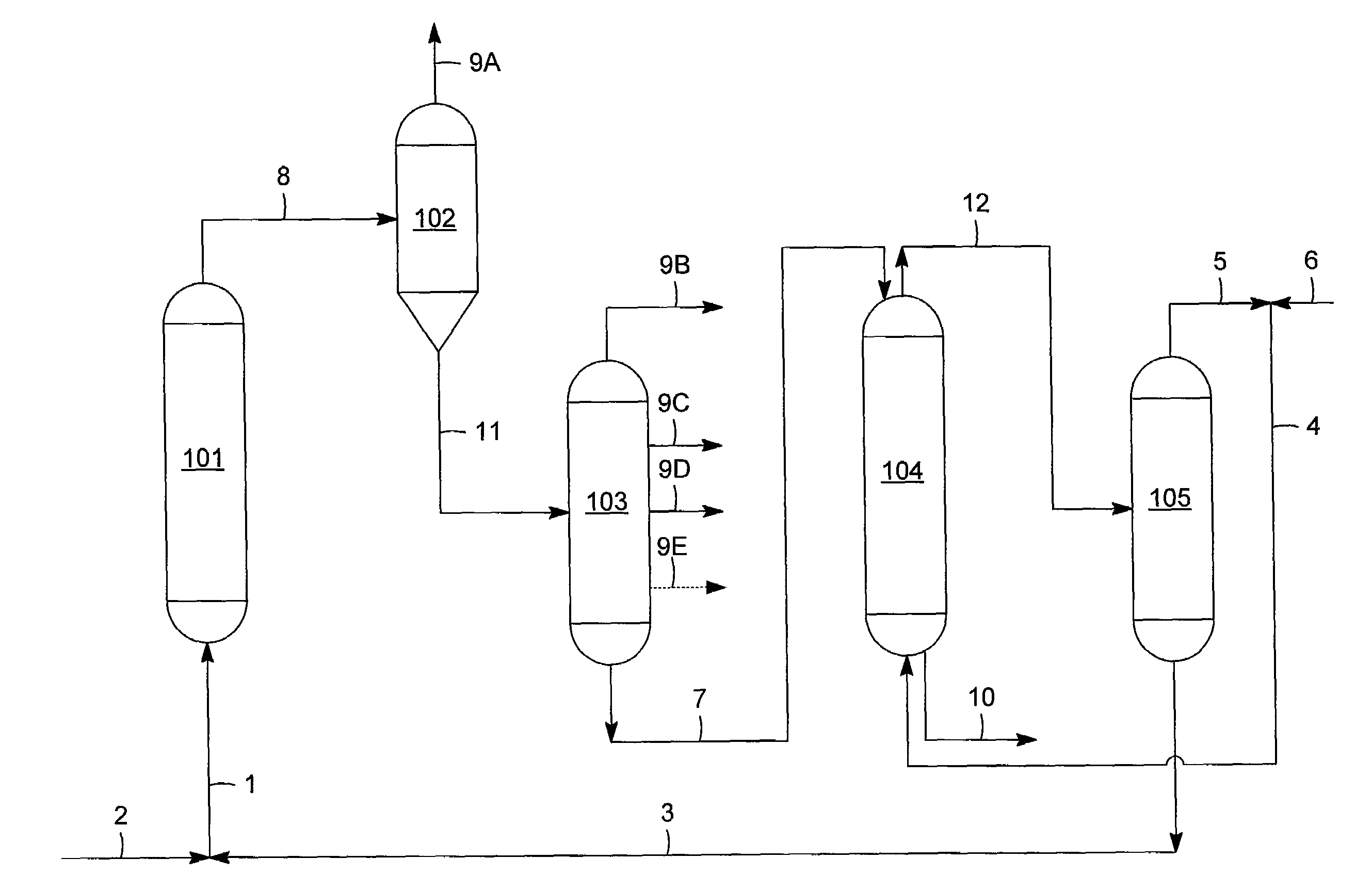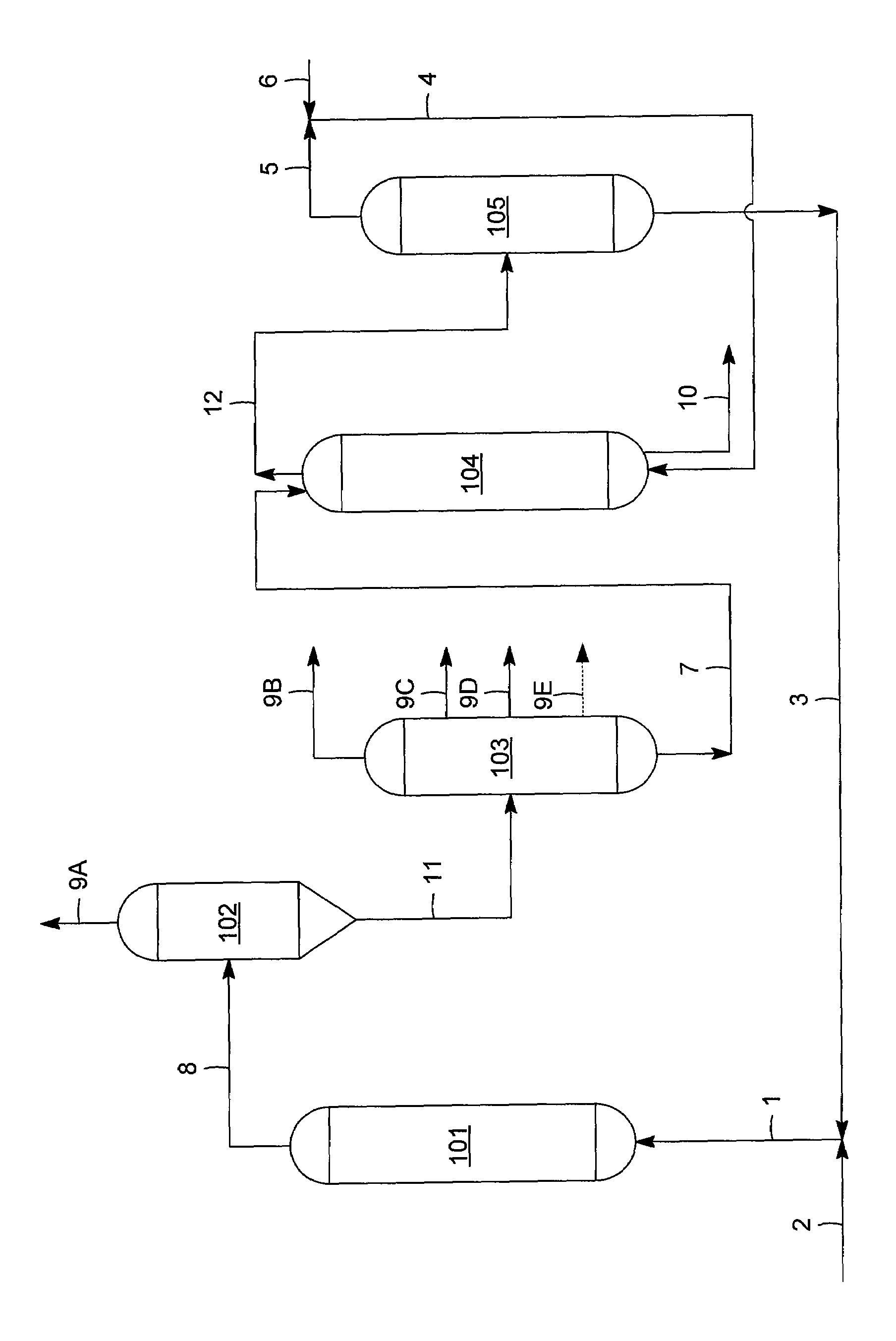Deasphalting of Gas Oil from Slurry Hydrocracking
a gas oil and hydrocracking technology, applied in the field of distillate hydrocarbon preparation, can solve the problems of avoiding vacuum and being highly susceptible to fouling, and achieve the effect of high-value distilla
- Summary
- Abstract
- Description
- Claims
- Application Information
AI Technical Summary
Benefits of technology
Problems solved by technology
Method used
Image
Examples
Embodiment Construction
[0019]Embodiments of the invention relate to the use of slurry hydrocracking (SHC) in combination with solvent deasphalting (SDA) to upgrade a heavy hydrocarbon feedstock. A representative heavy hydrocarbon feedstock to SHC comprises a deasphalted oil (DAO) that is obtained from subjecting an SHC gas oil to SDA. The DAO generally comprises aromatic compounds that beneficially solubilize asphaltenes, normally present in the heavy hydrocarbon feedstock, which would otherwise have a tendency to precipitate and lead to catalyst coking and equipment fouling. A representative liquid DAO product generally comprises at least about 10% (e.g., from about 20% to about 40%) by weight of aromatics.
[0020]Other components of the heavy hydrocarbon feedstock may include, as a fresh hydrocarbon feed, a refinery process stream conventionally converted using SHC. According to one embodiment, for example, the heavy hydrocarbon feedstock comprises both a vacuum column residue and the DAO product describe...
PUM
| Property | Measurement | Unit |
|---|---|---|
| temperature | aaaaa | aaaaa |
| boiling point | aaaaa | aaaaa |
| boiling point | aaaaa | aaaaa |
Abstract
Description
Claims
Application Information
 Login to View More
Login to View More - R&D
- Intellectual Property
- Life Sciences
- Materials
- Tech Scout
- Unparalleled Data Quality
- Higher Quality Content
- 60% Fewer Hallucinations
Browse by: Latest US Patents, China's latest patents, Technical Efficacy Thesaurus, Application Domain, Technology Topic, Popular Technical Reports.
© 2025 PatSnap. All rights reserved.Legal|Privacy policy|Modern Slavery Act Transparency Statement|Sitemap|About US| Contact US: help@patsnap.com


